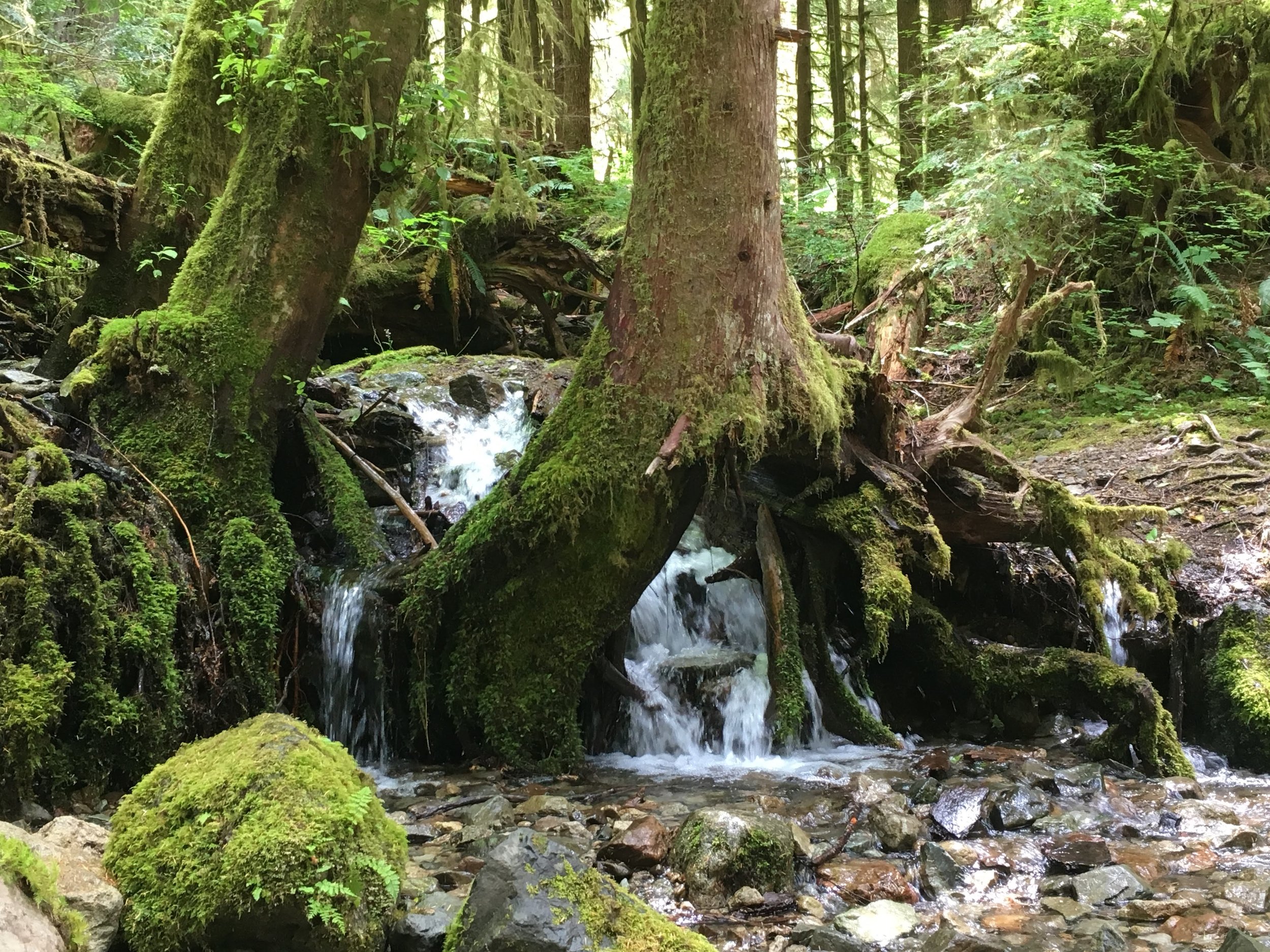Federal Mature and Old-Growth Forest Inventory
By Sarah Adloo, Executive Director
Opal Creek Wilderness in Willamette National Forest, Oregon
On Earth Day in 2022, President Biden issued a forest-focused executive order that addressed the need for the first ever federal definition of mature and old-growth forests and inventory of these forests across Forest Service and Bureau of Land Management (BLM) lands. One year later, these reports were released. The full report describes varying aspects that define mature and old-growth forests, with their acreages broken down by forest type.
An inventory of federal old-growth forests is long overdue. With this knowledge in hand, hopefully the federal government can now create policies that soundly protect these crucially important forests. The Old-Growth Forest Network is working with the Climate-Forests Coalition to push for these protections.
We created this graphic to summarize their inventory:
Across forests on BLM and USFS lands, 18% were inventoried as old-growth forests. The area identified as old-growth forest by federal agencies was higher than other previous estimates (Barnett et al. 2023, DellaSala et al. 2022), in part because they included pinyon-juniper woodlands across BLM land in the West. The federal report also defined and inventoried “mature” forests, which have not been well accounted for in the past. For a deeper dive into these inventories, check out Andy Kerr’s Public Lands Blog.
Only half of these old-growth forests benefit from overarching protection designations such as USFS Inventoried Roadless Areas or Wilderness Areas. While strong, these types of protections are not necessarily permanent and can be altered, demonstrated by threats to the Roadless Rule’s application to the Tongass National Forest in Alaska in 2020.
This inventory showed us that half of inventoried old-growth forests are without federal-level protections. Even since the release of this executive order, 240,000 acres of mature and old-growth forest logging projects are still planned and taking place on federal public land. We are pushing to fix that!
One opportunity for you to be involved in this process is through the USFS and BLM public comment periods, which have now been extended. Though the BLM comment period has concluded, you can still participate in the USFS comment period through July 20th.
These two forest-managing agencies are asking the public to comment on how they can foster ecosystem resilience of old-growth and mature forests and conserve our national forests for climate resilience.
The answer is simple! To best foster ecosystem and climate resilience, we need the federal government to stop allowing logging in these forests. Mature and old-growth trees sequester carbon from the atmosphere, are more fire-resistant than younger trees, and are critical resources for supplying clean and fresh water to our communities.
How to Comment
To submit a comment, go to https://www.climate-forests.org/take-action and click “Add My Name”.
These comments will be compiled and submitted by the Climate Forests Campaign, which OGFN is a member of. They have a sample comment outlining the importance of our older forests, but you are welcome to add your own thoughts when you submit.
You can also submit a comment (without the template), directly to The Forest Service.
THANK YOU FOR SPEAKING OUT FOR OUR OLD-GROWTH FORESTS!
Barnett, K., G. H. Aplet, and R. T. Belote. 2023. “Classifying, Inventorying, and Mapping Mature and Old-Growth Forests in the United States.” Frontiers in Forests and Global Change 5:1070372.
DellaSala, D. A., B. Mackey, P. Norman, C. Campbell, P. J. Comer, C. F. Kormos, H. Keith, and B. Rogers. 2022. “Mature and Old-Growth Forests Contribute to Large-Scale Conservation Targets in the Conterminous United States.” Frontiers in Forests and Global Change 5:979528.


